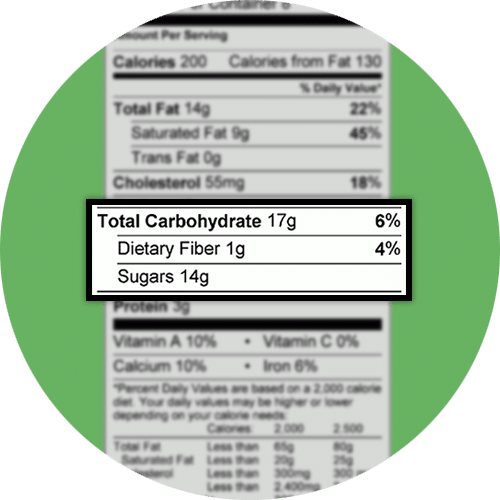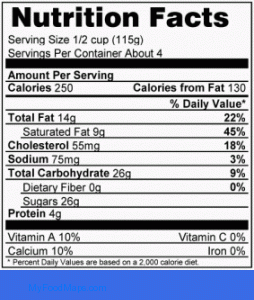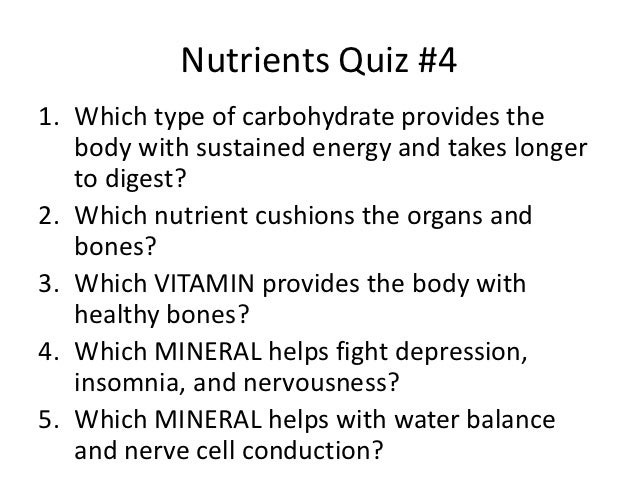45 carbohydrates on food labels
Nutrition labels: Finding out about the food you eat By law, most packaged foods must be labelled with a Nutrition Facts table which gives you information on: Serving size Calories Percent daily values (% DV) Information on 13 major nutrients: Fat Saturated and trans fats Cholesterol Sodium Carbohydrates Sugars Fibre Protein Vitamin A Vitamin C Calcium Iron How to Read Food Labels | mySugr Before reading the rest of the label, look at the serving size. The rest of the information — such as carbs, calories, sugars, fiber, and more — will be based on the serving size that's listed. Eating more than a serving size means you'll get more carbs, sugars, and calories than what's listed. Looking at the serving size also helps ...
How to Read Food Labels: Understanding Claims & Components Here is how the rule works. If a food has 5% Daily Value or less, it is low in that nutrient. If it has 20% Daily Value or more, it is high in that nutrient. So, a glass of artificial orange drink ...

Carbohydrates on food labels
Top 10 Foods Highest in Carbohydrates (To Limit or Avoid) Healthy high carbohydrate foods include whole grains, beans, vegetables, fresh fruits, nuts, and seeds. The daily value (DV) for carbohydrates is 300 grams. For more healthy high carbohydrate choices see the list of healthy high carb foods. › how-to-read-food-labelsHow to read food labels | healthdirect Energy: A kilojoule is a measure of energy. To lose weight, you need to eat and drink fewer kilojoules (kJ) than you use. You should limit your intake of discretionary or junk foods — i.e. those that have more than 600kJ per serve. Don't Be Fooled by Food Labels - WebMD But these foods can still be packed with calories, fat, sugar, salt, and carbohydrates, so be sure to read the ingredients. ... ," "What is the meaning of 'natural' on the label of food ...
Carbohydrates on food labels. dtc.ucsf.edu › learning-to-read-labelsLearning To Read Labels :: Diabetes Education Online On a nutrition food label, subtract the fiber from the total carbohydrate amount. When you read food labels, the grams of sugar are already included in the total carbohydrate amount, so you do not need to count this sugar amount separately. The grams of sugar listed include both natural sugars, from fruit or milk, and added sugars. How to Understand and Use the Nutrition Facts Label | FDA It's important to realize that all the nutrient amounts shown on the label, including the number of calories, refer to the size of the serving. Pay attention to the serving size, especially how ... 10 Best Printable Carb Chart For Foods - printablee.com Ideally, you need a carb for foods to eat in a day is around 45-65% of daily intake. Each individual has its own levels of activity, healthy metabolism, and other factors that counted from its carb intake. In conclusion, you need to keep a balanced intake of all main energy for the body as well. Low Carb High Protein Foods Chart. This Is How to Read a Nutrition Facts Label on the Keto Diet 1 gram of carbohydrate = 4 calories (4 units of energy) 1 gram of fat = 9 calories (9 units of energy) You don't have to memorize these values, but simply keep in mind that calories are the sum total energy of the protein, carbs, and fats found in food, and they strongly influence whether you lose, maintain, or gain weight.
Food Labeling & Nutrition | FDA Food labeling is required for most prepared foods, such as breads, cereals, canned and frozen foods, snacks, desserts, drinks, etc. Nutrition labeling for raw produce (fruits and vegetables) and ... Reading food labels: Tips if you have diabetes - Mayo Clinic Less than 5 grams of carbohydrates a serving Do the math Pay attention to serving sizes. The serving sizes listed on food labels may be different from the serving sizes in your meal plan. If you eat twice the serving size listed on the label, you also double the calories, fat, carbohydrates, protein, sodium and other ingredients. › en › whats-in-foodThe Functions of Carbohydrates in the Body | Eufic Jan 14, 2020 · Monosaccharides and disaccharides are usually referred to as simple carbohydrates. Long-chain molecules, such as starches and dietary fibres, are known as complex carbohydrates. In reality, though, there are more distinct differences. Table 1 gives an overview of the major types of carbohydrates in our diet. Table 1. A Background on Carbohydrates and Sugars - Food Insight Carbohydrates encompass a broad range of fibers, starches and sugars. Foods that contain carbohydrates provide a variety of other important nutrients to the diet (such as vitamins, minerals, phytochemicals and antioxidants). Carbohydrates occur naturally in whole foods such as fruits, vegetables, grains and dairy products.
Food Label Reading - What You Need to Know - Drugs.com Care guide for Food Label Reading. Includes: possible causes, signs and symptoms, standard treatment options and means of care and support. ... Total Carbohydrate: The daily value for carbohydrates is 300 gm. You may need more carbohydrates if you exercise a lot or are an athlete. People with diabetes need to control the amount of carbohydrates ... The Basics of the Nutrition Facts Label Carbohydrates: There are three types of carbohydrates: sugars, starches and fiber. Eat whole-grain breads, cereals, rice and pasta plus fruits and vegetables. Sugars: Simple carbohydrates, or sugars, occur naturally in foods such as fruit (fructose) and milk (lactose) or come from refined sources such as table sugar (sucrose) or corn syrup. Carbohydrates: MedlinePlus Carbohydrates, or carbs, are sugar molecules. Along with proteins and fats, carbohydrates are one of three main nutrients found in foods and drinks. Your body breaks down carbohydrates into glucose. Glucose, or blood sugar, is the main source of energy for your body's cells, tissues, and organs. Glucose can be used immediately or stored in the ... › food-labelsFood Labels | Nutrition.gov Food and Drug Administration (FDA) regulates the safety of food for humans and animals, including foods produced from genetically engineered (GE) plants, sometimes referred to as "genetically modified organisms" (GMOs). Find out more about the safety of GE plants, and how they are regulated here.
How to read food labels and find net carb contents Bad Example of Low Carb: This is the food label of 1 cup Cooked rice ( I choose this measure as for rice it is easy to measure in cooked form). Net Carb of Rice is Total Carbohydrate (45g) - Dietary fiber (0.6g). So Net carb is 44.4g. In a low carb diet you should restrict to 40-50g of net carb per day. So you can conclude Rice is not that ...
Nutrition Facts: How to Read Nutrition Labels - Greatist Common nutrition terms to know. The Food and Drug Administration (FDA) regulates terms used on food labels. Here are some to look for: Calorie-free: Less than 5 calories per serving. Low calorie ...
How To Read Food and Beverage Labels | National Institute on Aging At the top of the Nutrition Facts label, you will find the total number of servings in the container and the food or beverage's serving size. The serving size on the label is based on the amount of food that people may typically eat at one time and is not a recommendation of how much to eat. Read more about serving and portion sizes.
› nutritionsourceCarbohydrates and Blood Sugar | The Nutrition Source ... Dividing carbohydrates into simple and complex, however, does not account for the effect of carbohydrates on blood sugar and chronic diseases. To explain how different kinds of carbohydrate-rich foods directly affect blood sugar, the glycemic index was developed and is considered a better way of categorizing carbohydrates, especially starchy foods.
How to Read Nutrition Facts Label - Food Network This carries over to all the other nutrients on the label. If 1 serving of a food has 120 mg of sodium, it can technically be labeled as a "low sodium" food. ... Total Carbohydrates: This is ...
Fats, sugar, carbs: How to read a food label (and seven words to watch ... For example, if you consider that a slice of bread or a piece of fruit contains 15-20 grams of carbs per serve, then a food that contains 60-80 grams of carbs per serve is an energy-dense food that needs to be eaten in controlled portions. A balanced meal will contain 30-60 grams of carbs per serve. The higher the wholegrain content, the better.
How Do You Know Your Food's Nutrition Facts Label Is Accurate? NIST's measurements are accurate to within 2% to 5% for nutrient elements (such as sodium, calcium and potassium), macronutrients (fats, proteins and carbohydrates), amino acids and fatty acids. As you may have noticed, most of your favorite food items have recently updated their nutrition facts labels.
How to Read and Interpret Nutrition Labels - Cecelia Health September 22, 2021 by Cecelia Health. As part of keeping track of an overall balanced diet, the number one starting point is to read the nutrition label. Start with the portion size at the top of the label to determine what a portion size is. This helps keep track of optimal dietary intake. There may be more than one serving in a package.
Carbohydrates: How carbs fit into a healthy diet - Mayo Clinic The label shows total carbohydrates — which can include fiber, total sugars and added sugars. Carbohydrates and your health Despite their bad reputation, carbohydrates are vital to your health for many reasons. Providing energy Carbohydrates are the body's main fuel source. During digestion, sugars and starches are broken down into simple sugars.
kidshealth.org › en › teensFood Labels (for Teens) - Nemours KidsHealth A food with 5% or less of a nutrient is low in that nutrient. A food with 10%–19% of a nutrient is a good source of that nutrient. A food with 20% or more of a nutrient is high in that nutrient. The information on food labels is based on an average adult diet of 2,000 calories per day.
Figuring Out Food Labels | HealthyPlace Serving Size The nutrition label always lists a serving size, which is an amount of food, such as 1 cup of cereal, two cookies, or five pretzels. The nutrition label tells you how many nutrients are in that amount of food. Serving sizes also help people understand how much they're eating. If you ate 10 pretzels, that would be two servings.
Dietary Fiber on the Nutrition Facts Label | ESHA Research The final rule for FDA's 2016 updates to Nutrition Facts labeling incorporates two major changes to dietary fiber that food manufacturers need to be aware of: (1) a definition of "dietary fiber" - a term that FDA had not previously defined and (2) an increase in the DRV from 25 grams to 28 grams. Dietary Fiber is a mandatory label ...
› health › food-nutritionSimple Carbohydrates vs. Complex Carbohydrates - Healthline Aug 19, 2020 · Be sure to include the following complex carbohydrates as a regular part of your diet: 1. Whole grains. Whole grains are good sources of fiber, as well as potassium, magnesium, and selenium.Choose ...
Carbohydrates: The Next Item on the label — Theresa Wright ... Most Nutrition Facts labels only have Total Carbohydrates, Dietary Fiber, and Sugars. Total Carbohydrates includes all the starches, fiber, sugar, sugar alcohols, and naturally occurring and added sugars in the product. Dietary Fiber Your body needs about 25 grams per day for adult women and about 38 grams per day for adult men.
How to Read Nutrition Labels Like a Pro - Reader's Digest Canada Compare the specific amount of food displayed on the label to what you're actually eating; these portions can be quite different, so calculate accordingly. ... Daily values for carbohydrates, total fat, saturated fat and trans fat are based on a 2,000-calorie-a-day diet. Daily values for the remaining nutrients apply to most people ...
Nutrition Facts Label - IFT.org - Institute of Food Technologists The Nutrition Facts Label, also referred to as the Nutrition Facts Panel, on packaged food and beverage products is intended to help consumers make informed food choices that contribute to a healthy diet. The first Nutrition Facts Label regulations were published in 1993 and launched in 1994.
Don't Be Fooled by Food Labels - WebMD But these foods can still be packed with calories, fat, sugar, salt, and carbohydrates, so be sure to read the ingredients. ... ," "What is the meaning of 'natural' on the label of food ...



/Untitled-design-1--5755c3703df78c9b46903dab.jpg)








Post a Comment for "45 carbohydrates on food labels"